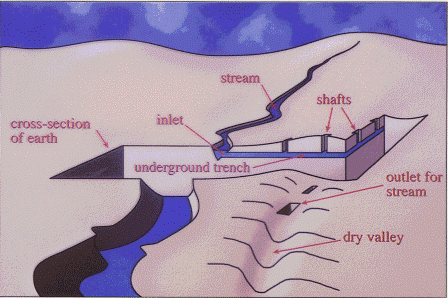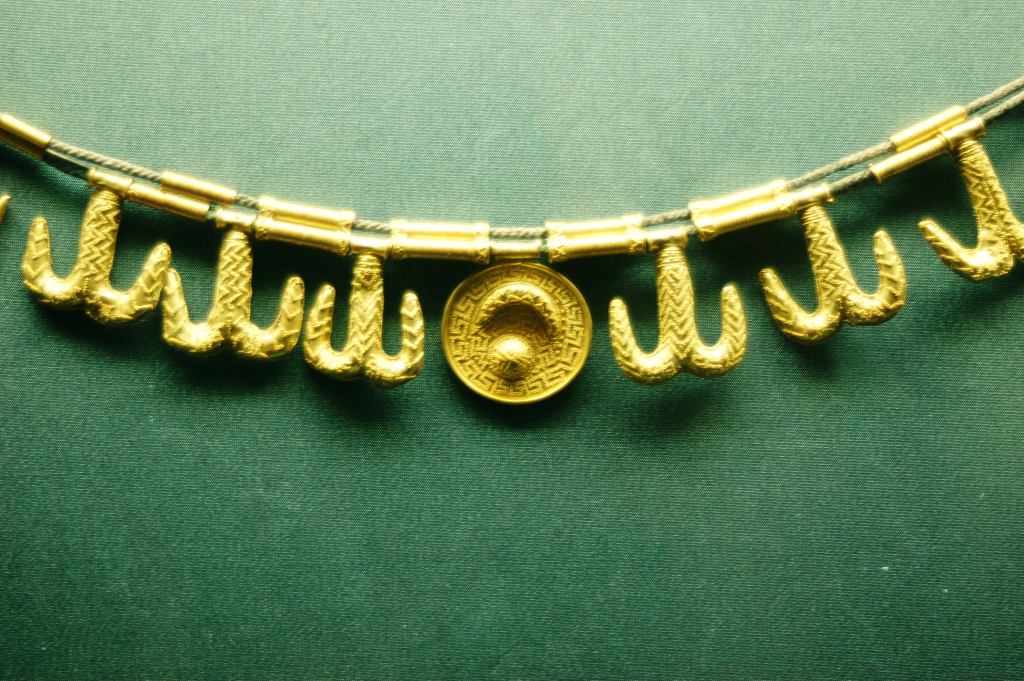|
|

Trading ship. Etruscan.
5th C BC. Tomb fresco. Tomb of the Ships,
Tarquinia, Italy.
Photo Mysterious Etruscans and other Web sites.
Highlights
The Etruscans understood that to prosper you
needed a growing population.
Only with a growing population could you
escape the basics of survival--hunting, gathering, or subsistence
farming.
The Etruscans used technology to increase the welfare of their society
and thus the total size of the population.
|
|
Etruscan Technology and Engineering
As Etruscan power grew, deadly rivals
took notice: pirates, Carthaginians, Romans. But the Etruscans were not
complacent. They became noted engineers and technologists to protect
themselves.
They could
have used a good publicist. Hardly anyone
today has heard of an Etruscan cuniculus, while everybody knows about
Roman aqueducts.
The Etruscans developed:
--new water and agricultural techniques
--metallurgy, especially bronze
--roads
--ships and ports
--architecture and buildings
|
| |
|
|
| |
|
|
| |
|
|
Architecture
Roof Tiles and Temples
The Etruscans spread tiled roofs and
temple architecture
throughout Italy. Tiled roofs protected the fragile and perishable wooden building underneath.
Their notable contribution was in popularizing the roof's seal. The roof
could then protect the structure of the wooden building from the effects
of rain and animals for a longer time than existing building materials.
To seal, the Etruscans lay down
rectangles of tile across the roof, then overlapped half-round tiles on
top, along the seams of the rectangles--an ingenious seal.
The ends of the tiles along the roof line were sealed with antefixes,
usually with fierce-looking figures like a Gorgon or a Medusa to scare
away danger. Or to keep birds from nesting inside the openings.
Tiled roofs were most often seen on Etruscan temples. The Etruscans used
post-and-lintel construction, with columns as the visual point of focus,
topped by the red tile roof. |
|

A terracotta roof tile,
schematic drawing

Antefix, Gorgon or Medusa .
Etruscan.
5th c BC.
Terracotta. Getty Villa. |
| |
|
|
| |
|
|
| |
|
|
Water Control
The Cuniculus
The most remarkable Etruscan engineering
feat was in water control. .
Plentiful, controlled, clean water was one of
the most serious problems in the ancient Mediterranean.
The Etruscans
inhabited potentially fertile coastal plains. But, their water
source--the downhill flow from the Apennines Mountains--was
unpredictable. It meandered down in streamlets and became
marshland rather than flowing in a straight line.
The water from marshlands could also be unhealthy. In a marshland, standing water is
exposed to direct sunlight, developing algae and methane gas.
The Cuniculus
The cuniculus was their ingenious solution. It
was a type of trenching system which could drained water away from the marshes.
They used it to irrigate
dry farmland, thus increasing the food supply.
By carrying healthy water
to Etruscan villages, tiny communities could become larger. As
Etruscan villages grew into cities, specialized labor to produce goods
emerged.
|
|

Etruscan cuniculus system for
water control. |
|
|
|
|
|
|
|
|
|
|
|
|
Metallurgy
The Etruscans were sitting on vast natural
resources, both on their Island of Elbe and in the foothills of the
Apennines. Underneath the surface lay copious amounts of copper and
other ores.
As their population grew, specialists emerged. The Etruscans
developed highly-desired metallurgy skills.
They became famous for their
bronze, an alloy of copper and tin, and for their gold jewelry.
Etruscan Armor
Bronze gave them an edge in military prowess. Their military equipment
was bronze, while their competitors had only leather. With the technical superiority of their bronze, Etruscan military
forces could protect their natural resources and ports.
Etruscan Jewelry
Etruscan jewelry today shows astonishing technique and refinement.
They
devised new gold smithing techniques, resulting in high demand for their
products.
As wealth accumulated throughout the Mediterranean, their supply of gold
jewelry met a growing market for their products. |
|

Military
Body
Armor (Cuirass).
Etruscan. 5th C BC. Bronze. Metropolitan Museum, New York.

Necklace.
Etruscan. Gold. State Museum
of Antiquities, Munich. |
|
|
|
|
|
|
|
|
| |
|
|
Roads and
Bridges
The raw ores needed for metallurgy and for trade were located in the interior of Etruscan territory. The metalworking shops and the
coastal trading ports were on the coast.
Roads
To get the ores to the workshops and then to the trading ships, the Etruscans
built roads that were the best until the Romans perfected road building
hundreds of years later. Etruscan roads were made of tufa--easy to cut
but also easy to crumble.
Bridges
The Etruscans built bridges for their roads, made of wood and tufa.
(Two
tufa bridge supports remain near San Giavonale. The bridge itself is
long gone.) |
|

Etruscan
Road,
Sarteano.
Photo: Italy House Scout web site.
|
| |
|
|
| |
|
|
Sea Power
Shipping by sea
was much more economical and faster than transport by animal-drawn
carts. The Etruscans were known for their seamanship, enabling them to
trade freely throughout the Mediterranean.
Etruscan Trade
The Etruscans’ control over the seas was crucial for developing its
north-south trade. They wanted amber. This precious ingredient was
used in jewelry and
in religious rites from the Baltic Sea in the north. Once the amber Italy, the
Etruscans traded it by sea with areas throughout the Mediterranean
and further east.
On the Adriatic, the Etruscans established the port of Spina, below
present-day Venice, for east-west trade.
They exported their own finished goods, especially jewelry, and
imported huge numbers of Greeks vases in the 5th c BC. Etruscan objects
have been found all around the
Mediterranean and the Near East.
|
|

Trading ship. Etruscan.
5th C BC. Tomb fresco. Tomb of the Ships,
Tarquinia, Italy.
Merchant vessels were squat affairs, using square sails and closely
hugging the coastline.
|
|
|
|
|
|
|
|
|
There’s lots we don’t know and cannot recover.
While we can see the final product-- ships (through paintings), tile
roofs, roads, military gear, jewelry-- we know little about how
they got there. What were the means
of production? How did they extract minerals and raw ore from the ground
and worked the metals? No intact mine works or metallurgy workshops have
been found to give us clues.
How did they train others?
We don't know. Engineering manuals, if any were ever composed,
have not survived. |
|
|
|
|
|
|
|
You may contact me, Nancy
Padgett, at
NJPadgett@gmail.com |
|
|
|
|